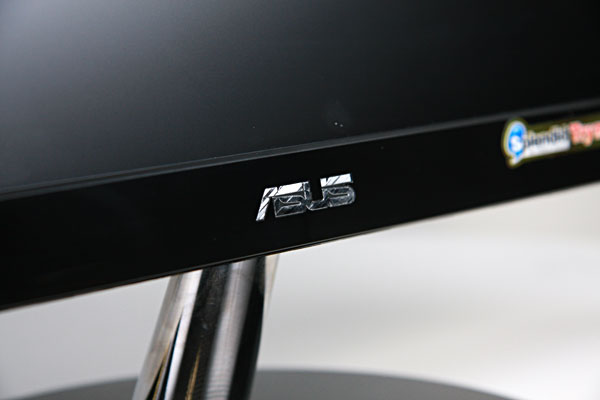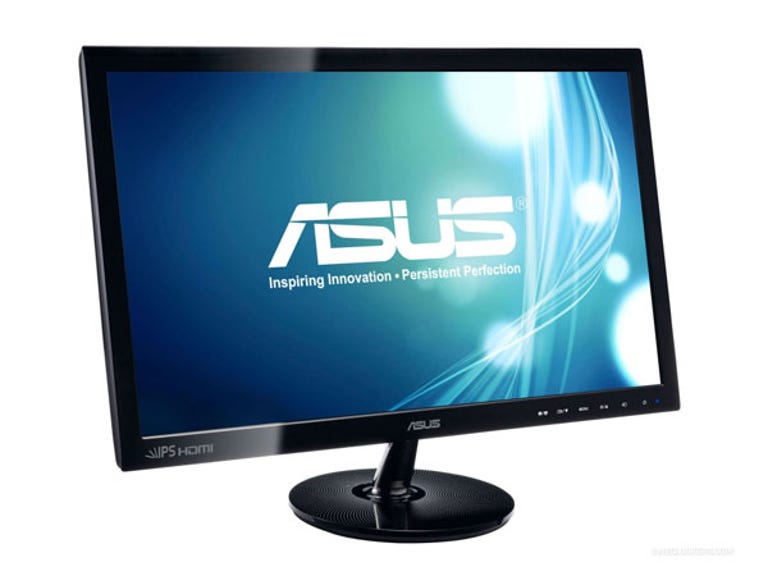 Why You Can Trust CNET
Why You Can Trust CNET Asus VS239H review: Asus VS239H
The VS239H is a standard monitor that "does the job", albeit with a cheaper IPS screen, rather than the inferior TN. If you have basic needs, this may see you through — just be aware of the limited defective pixel policy.
With the introduction of E-IPS, getting good quality imagery doesn't necessarily require robbing a bank first.
The Good
The Bad
The Bottom Line
Asus' VS239H is such a beast, bringing 23-inches of IPS technology, with 1920 horizontal pixels and 1080 vertical. You're not going to find excessive inputs here or extra fancy features — this is a monitor aimed at fulfilling most people's basic needs, while still giving a decent picture.

(Credit: Craig Simms/CNET)
Specs at a glance
| Size | 23 inches |
|---|---|
| Resolution | 1920x1080 |
| Aspect ratio | 16:9 |
| Pixel pitch | 0.265 |
| Panel technology | IPS |
| Viewing angles (10:1 contrast) | H: 178° V: 178° |
| Response time | 14ms — although Asus doesn't mention what method it used to measure. |
| Max vertical refresh | 60Hz |
| Connections | DVI, HDMI, VGA, 3.5mm line out |
| Accessories | DVI, VGA, power cables |
Stand and ergonomics
Unless you're Dell, most monitor manufacturers don't offer a full range of motion in their stands, offering tilt only. Here, Asus is no exception. You won't find any cable management either, although the horizontally angled ports do go some way in reducing the appearance of clutter.
Asus' stand is exceedingly simple.
(Credit: Craig Simms/CNET)
Connections
Power, HDMI, DVI, VGA and 3.5mm line out.
(Credit: Craig Simms/CNET)
Buttons and on-screen display (OSD)
Asus mounts its buttons under the monitor, labelling them on the front of the screen. You'll have to operate by muscle memory, especially in the dark — the layout of the buttons don't feel particularly natural.
It's easy to win this one, vendors: front mount the buttons, back-light them and make the menu context sensitive.
(Credit: Craig Simms/CNET)
The OSD is a simple menu driven affair, with categories on the left and options on the right. Asus doesn't really stray from the basic formula of brightness, contrast, sharpness and a couple of presets. We recommend you skip them all, set the monitor to "Standard" mode from the "Splendid" menu option, then hit up the "Color" section and adjust RGB values yourself through the "Color Temp" option.
A straightforward OSD for a straightforward monitor.
(Credit: Craig Simms/CNET)
Performance
Lagom.nl LCD tests
After calibrating to a target brightness of 140cd/m² with an X-Rite i1Display 2, Eye-One Match 3 and tweaking with HCFR, the VS239H was run through the Lagom.nl LCD tests.
| Image tests | |||||
|---|---|---|---|---|---|
| Contrast | Sharpness | Gamma | Black level | White saturation | Gradient |
| Pass | Too sharp | Pass | Pass | Pass | Very slight banding towards the dark end of the scale. |
Asus' screen marches through the image tests, only slightly stumbling with gradients and providing an image that's slightly too sharp. The OSD prevents sharpness adjustments, unless you're using the VGA port, so there's nothing that can be done here.
| Inversion pixel walk tests | ||||||||||
|---|---|---|---|---|---|---|---|---|---|---|
| Test 1 | Test 2a | Test 2b | Test 3 | Test 4a | Test 4b | Test 5 | Test 6a | Test 6b | Test 7a | Test 7b |
| Pass | Pass | Pass | Pass | Pass | Pass | Pass | Pass | Pass | Pass | Pass |
The VS239H is the only monitor we've tested to pass all inversion pixel walk tests — most usually fail anywhere between one and four. Though there is very faint motion across each pattern, there's no visible flickering.
Input lag
Measured against a Samsung SyncMaster 975p CRT and using a Canon 40D set to a shutter speed of 1/320, an average of over 60 photographs were taken using StoppUhr. Lag time was completely negligible — the Asus VS239H would make a decent gaming monitor if you're not fixated on 120Hz.
HDMI performance
While a monitor might have an HDMI port, there's no guarantee that it'll display images as expected. We hooked up a PlayStation 3 and checked for 24p capability and judder, as well as running the HQV Blu-ray test to see how well it coped with an interlaced source and noise.
| 24p capable | Understands YUV | Mission: Impossible III scene 11 judder test | Mission: Impossible III scene 14 judder test |
|---|---|---|---|
| No | Yes | Judder | Judder |
| HQV noise reduction score | HQV video resolution loss score | HQV jaggies score | HQV film resolution loss score | HQV film resolution loss — stadium score | Total score out of 100 |
|---|---|---|---|---|---|
| 0 | 0 | 0 | 0 | 0 | 0 |
While a 1080i source does subjectively look better, if softer on the Asus than some other monitors, it doesn't pass muster on any of the HQV tests. 24p isn't supported either — this is a monitor best kept for gaming at most; a standalone video player is unlikely to cope well unless it has its own filters built in.
Viewing angles
Viewing angles were taken with a Canon 40D in spot-metering mode, with only shutter time adjusted to obtain a good exposure.
Viewing angles are better than TN, as you'd expect from an IPS monitor, however horizontals don't appear to be as good as those on premium IPS panels.
(Credit: Craig Simms/CNET)
Light bleed
Our review sample had two points of obvious light bleed from the right hand side when a completely black screen was displayed.
It's important to note that the effects of light bleed will likely change from monitor to monitor, regardless of make.
Power consumption
We measured power consumption using a Jaycar mains digital power meter. It's important to note here that, due to limitations of the meter, measurements are limited to values of 1W and greater, and are reported in 1W increments.
All measurements, screen brightness and contrast were set to 100 per cent, and a test image was displayed.
| Juice Box |  |
|---|---|
| Maximum power draw | 27W |
| Power-saving mode | <1W< td=""> |
| Off | <1W< td=""> |
Asus' monitor is reasonably frugal, considering its size, and properly goes into power saving/off modes.
Warranty
Asus covers the VS239H with a three year warranty. While this is reasonably competitive, its defective pixel policy is not, requiring more than three bright dots or more than five dark dots before it will honour a warranty request.
Conclusion
The VS239H is a standard monitor that "does the job", albeit with a cheaper IPS screen, rather than the inferior TN. If you have basic needs, this may see you through — just be aware of the limited defective pixel policy.


